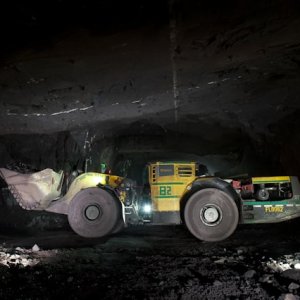
Tech Advances Help to Make Mining in Mexico Safer
Life in an underground mine is fraught with danger. At any point during a shift a worker might be exposed to an electrical fire, poisonous gas leak, collapsed tunnel, power outage and countless other threats. But although accidents are inevitable over the course of a mine life, technological advances enable mine managers to minimize risks and stricter corporate practices are helping to make mining in Mexico far safer than in previous years.
“The industry is moving in the right direction,” says Gregorio Castruita, General Manager of Resemin Mexico, a manufacturer of underground-drilling equipment. “It took many years of hard work but we have finally reached a situation in Mexico where, for the majority of enterprises, worker safety is equally as important as productivity and ore extraction levels. It is a priority for everyone.”
The strategy is clearly bearing fruit. According to the Mexican Mining Chamber (CAMIMEX), there were a total of 73 fatal accidents in Mexican mines in 2012; that number has dropped every year since, falling to 35 in 2015. The CAMIMEX “Incident Level” report ranks industry safety standards according to statistics from the Social Security Institute (IMSS) on a scale of 0-5, where the lower the number, the fewer the incidents recorded. According to the 2016 Incident Level report, the mining sector incident rate dropped to 2.1 from 2.3 in 2015 and below the average rate of 2.17. This is enough to make the extraction industry the fifth-safest industrial activity in Mexico.
MOVING AWAY FROM DIESEL
The use of diesel in underground mines has long been a source of controversy in the industry. In an enclosed space like a tunnel, toxic fumes emitted by diesel consumption can do irreparable damage to lungs and eyes. Several equipment manufacturers, therefore, are focusing their efforts on making alternatives like batterypowered vehicles more viable. As a result, diesel-powered vehicles underground could soon be a thing of the past.
“We will look back in 10 years’ time and be amazed that a poisonous element such as diesel was ever used in underground mines,” says Mike Kasaba, CEO of Artisan Vehicle Systems, a US designer of electric motors and battery packs for the underground mining industry.
Among those leading the push toward dieselfree mines is Swedish heavy-machinery giant Atlas Copco, whose new SmartRoc CL drill rig was designed specifically to lower fuel consumption. The design is fitted with a clutch system that disengages the compressor when air is not required, drastically reducing energy usage. “This system, coupled with exceptionally fuel-efficient hydraulic and control-system design, enables the SmartRoc CL to use up to 45 percent less fuel than competitive technologies,” says Carlos Caicedo, the company’s former Mexico Managing Director.
The design is also fully automated, which has added benefits by enabling workers to remain at the surface and operate the machine from a remote, safe location. “We hope to carry out testing on our electrical, batterypowered loaders for underground mines soon,” says Caicedo. “Our goal is to have a full line of automated equipment by 2020.”
AUTOMATION VS MECHANIZATION
But while Atlas Copco and others are placing their faith in automation and the concept of man-free mines, Resemin is following a different path toward safety improvement. The Peruvian drill rig manufacturer is actively seeking to simplify its new models through mechanization, which eases the physical human input, rather than complicate them through automation, which removes human judgement altogether. While Castruita accepts that the industry “owes a lot” to automation and robotic machinery, he is yet to be convinced that the long-term reliability of the new technology is superior to simpler, mechanical designs that put performance, rather than untested technology involving complicated electronic systems, first.
“In an underground mine, machinery is subjected to extreme conditions including temperature, dust, water and harmful gas leaks and the more electronic networks are in use, the higher the chance of a short circuit or failure,” says Castruita. “We focus on designing relatively simple but highly productive machinery that has a minimal chance of costing the user through downtime.”
This policy has brought great rewards. In 1H17, Resemin sold 20 new machines in Mexico and added preciousmetals giant Fresnillo to its growing client network. “We see little cause to change our policy at this stage,” says Castruita.
















